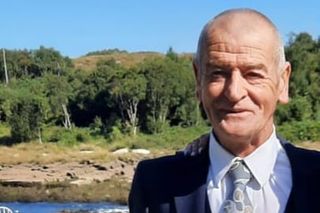Gas brought to shore from Mayo coast will produce ‘lower emissions than imported fuel’, says exploration firm
Work on the gas refinery site at Bellanaboy, Co Mayo, in 2009. Photo: Mark Stedman
A study of Europa Oil & Gas’s planned Irish offshore gas project has found that its expected emissions would be significantly lower than either domestically produced or imported gas currently used here, the company has said.
The independent research was conducted by Sustain:able, a UK advisory company that specialises in forecasting greenhouse-gas emissions associated with the oil and gas industry.
It was asked to re-assess expected emissions from the Inishkea West prospect in the Slyne Basin off the coast of Mayo due to changes in the field’s estimated size and location.
It found that Inishkea West gas would produce 2.8kg of carbon dioxide-equivalent per barrel of oil equivalent, where 1 barrel of oil equates to 6,000 standard cubic feet of gas. This is less than the 36kg from imported UK gas. It also compares favourably with the 5.3kg average for the Corrib gas field over its lifetime.
“This updated emissions report reinforces the importance of the gas resource at Inishkea West, which has the potential to eradicate the need for higher-emissions-intensity gas imports from the UK for up to three years, and would help Ireland meet its carbon emission reduction targets,” Will Holland, CEO of Europa, said.
He said the FEL 4/19 offshore licence contained a 1.5 trillion cubic feet low-risk prospect, where a discovery could be brought online quickly.
“We are now in the process of progressing FEL 4/19 to drilling, which requires us to attract additional partners to this highly prospective licence,” he said.
The exploration firm, which has its headquarters in the UK, said the low emissions associated with the prospect were due to its proximity to the existing Corrib field as it was only 18km from the current infrastructure.
The gas would be produced through an existing sub-sea pipeline and at the facilities already in place at Bellanaboy terminal.
Europa also attributed the low-emissions finding to the quality of the gas, the low levels of impurities in it, the expected size of the resource and the projected initial production rates.
Last January, Europa was told by the Department of the Environment that Minister Eamon Ryan had agreed to extend phase one of its FEL 4/19 licence to 2026.
The extension is to be used for further technical studies and to allow Europa more time to find a partner to advance development of the licence.
Join the Irish Independent WhatsApp channel
Stay up to date with all the latest news















